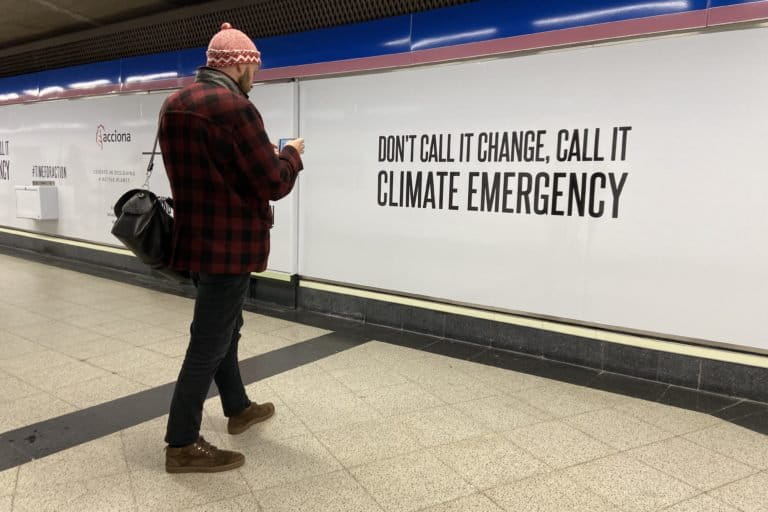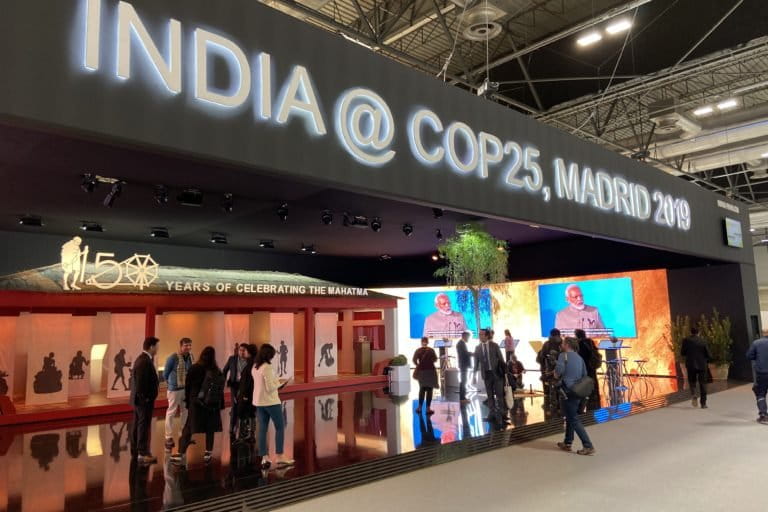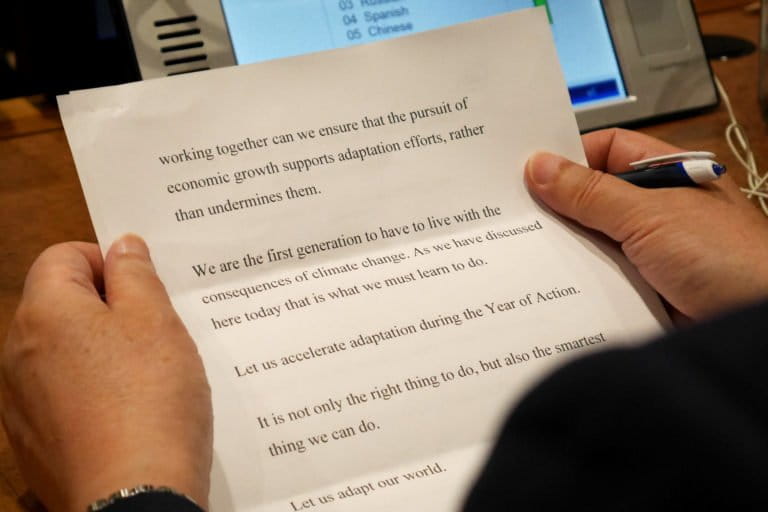What is a COP?
The Conference of Parties, or CoP, is the annual meeting of the representatives from the countries that are members of the United Nations Framework Convention on Climate Change (UNFCCC), also known as the Climate Change Convention.
It is as the CoPs that the member countries assess the progress of the implementation of the goals of the Convention and plan the next steps on dealing with climate change.
The 2019 conference, COP 25, is currently taking place in Madrid, Spain from December 2-13.
UNFCCC, Kyoto Protocol, Paris Agreement – what do all of these mean?
In June 1992, the United Nations organised an important summit meeting on the environment – the United Nations Conference on Environment and Development (UNCED) where more than 100 heads of states participated to design ways to prevent global environmental degradation. At the UNCED – also known as the Earth Summit or the Rio Summit, since the Conference was held at Rio de Janeiro in Brazil – the UNFCCC (Climate Change Convention) was designed and agreed upon by the participating member states.
The UNFCCC is a framework convention, which requires member countries to initiate national policy and legislation for its implementation. It went through a two-stage endorsement process where each country’s head of state or environment minister signed the Convention, and it was later ratified by each country’s national legislative body. The UNFCCC is the basis for international cooperation to combat climate change by limiting average global temperature increase.
The UNFCCC entered into force in 1994 with 197 parties agreeing that greenhouse gas emissions are the leading cause for climate change. Following that, the first UN climate change Conference of Parties to UNFCCC was held in 1995 in Berlin, Germany.
At the third CoP held in Kyoto in Japan in 1997, an international agreement subsidiary to the Climate Change Convention was developed. Called the Kyoto Protocol, this agreement legally binds developed countries to emission reduction targets. Developed countries agreed to reduce their greenhouse gas emissions to 5.2 percent below 1990 levels by the Protocol’s first commitment period started in 2008 and ended in 2012. The developing countries did not have emission reduction targets.
The Kyoto Protocol also enabled three mechanisms to jointly achieve the emissions reduction targets. These were emissions trading between developed countries; joint implementation of the target between developed countries; and a clean development mechanism whereby developed countries could get carbon credit for their activities that helped developing countries decrease their greenhouse gas emissions.
The second commitment period for the Kyoto Protocol began in 2013 and will end in 2020.
With the Kyoto Protocol commitment ending next year, the Paris Agreement of 2015 is the latest in global climate action. In this, world leaders agreed to keep global temperature increase to well below 2 degrees Celsius from the time when fossil fuels were used and pursuing efforts to limit the temperature increase to 1.5 degrees Celsius above pre-industrial levels.
The Paris Agreement will come into effect in 2020 and replace the Kyoto Protocol.

So what’s happening at the COP 25 in Madrid?
The COP this year in Madrid is a stepping stone to next year when the new commitments to climate action come in force. The 2019 CoP aims at increasing ambitions to tackle climate change and completing processes related to the full operationalisation of the Paris Climate Change Agreement, before the 2020 climate summit.
Read more: If world adheres to Paris Agreement, it could reach net-zero emissions in 31 years.
According to the UNFCCC, at COP 25, “Crucial climate action work will be taken forward in areas including finance, the transparency of climate action, forests and agriculture, technology, capacity building, loss and damage, indigenous peoples, cities, oceans and gender.”
Among its highest priorities this year is the establishment of the rules for creating carbon markets among nations, cities and corporations to incentivise emission-reduction strategies.

Will just a 2-degree rise in temperature really be that bad?
Longer heat waves, more intense rainstorms, seas eating into coastal cities, the disappearance of corals and crop production impacted negatively, putting pressure on food security – these are just some of the impacts if temperatures go up by 2 degrees Celsius. Keeping temperature increase to a 1.5 degree Celsius limit, versus a 2 degree Celsius increase, can reduce the intensity of climate change impact on society and natural biodiversity.
Given that global temperature is currently rising by 0.2 degrees C (±0.1 degrees C) per decade, human-induced warming has already reached 1 degrees C above pre-industrial levels around 2017. If this pace of warming continues, would reach 1.5 degrees C around 2040, notes a report by the Intergovernmental Panel on Climate Change (IPCC).
Read more: Is Indian monsoon turning into a string of extreme weather events?
Emphasising the urgency in action, in September this year, the UN Secretary-General António Guterres convened a Climate Summit bringing together governments, the private sector and civil society to support the multilateral process for accelerating climate action and ambition.

“We need more concrete plans, more ambition from more countries and more businesses. We need all financial institutions, public and private, to choose, once and for all, the green economy,” he said.
At the summit, India noted that it can only aspire to implement what it has already committed.
Read more: The impact of climate change on women, tribal people and coastal communities
What is India’s stand at COP 25?
India’s approach at COP 25 will be primarily guided by the principles of Equity and Common But Differentiated Responsibilities and Respective Capability (CBDR-RC), underscored in the UNFCCC and included in the Paris Agreement. These principles acknowledge that while all countries shall share the responsibility of climate action, responsibility is not equally distributed among all parties.
The UNFCCC notes that developed countries should take the lead in combating climate change and its adverse effects given that the largest share of historical and current global emissions of greenhouse gases has originated in developed countries. According to the UNFCCC, “per capita emissions in developing countries are still relatively low and that the share of global emissions originating in developing countries will grow to meet their social and development needs.”

In a statement, the Indian government emphasised that developed countries should fulfil their climate finance commitments and progressively and substantially scale up their financial support. The statement also noted that at COP 25, India will stress that developed countries fulfil their pre-2020 climate commitments and any implementation gaps should not weigh heavy on developing countries as climate action moves to post-2020 period.
The Indian delegation at COP 25 in Madrid is led by Prakash Javadekar, Minister, Environment, Forest and Climate Change. The India booth at COP 25 showcases Mahatma Gandhi’s spinning wheel, charkha, as a message of sustainable living for India and the world.

Read more about people all over the country doing their bit to adapt to climate change: a millennial farmer who wants to feed the country, women in Odisha saving up for an uncertain future, climate resilient housing in Ladakh, the 11 year old holding governments accountable for inaction on climate change and the woman guarding Mumbai’s defence against climate change
Banner image: COP 25, the UN climate conference, is currently underway in Madrid, Spain till December 13. Photo courtesy UN Climate Change/Flickr.
